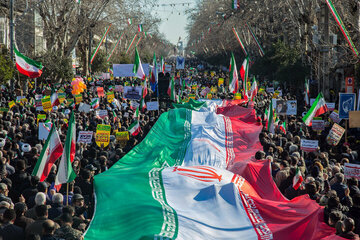Alwaght- The US stock markets experienced surprise fall after concerns about a new recession were grown, with Dow dropping 800 points or over 2 percent. Nasdaq also lost 2 percent of its value as the markets saw a troubled trading day on Wednesday. Bank of America has warned the US economy has nearly a one-in-three chance of being plunged into a recession within the year as the trade war with China heats up and interest rate tweaks fail to soothe a troubled market.
After the markets witnessed trouble in late July, the new wave of drops hit again, starting from the US and continuing to the European and Asian markets. This comes while Trump administration is yet to decide on new tariffs on Chinese goods.
The massive reaction to the trade war between the two economic heavyweights needs a deep concentration. But the main question is that if the US manages to fill the trade gaps with China, can the global economy match itself with the new situation?
Recession signs
On Wednesday, concerns intensified as Treasury yield rates dropped. 10-year Treasury yield rates dropped compared to 2-year yield, the first fall since 2007.
This, according to the analysts, is a sign signaling a pre-recession period, something seen in the past before the economic crises. The capital owners prefer to deposit their money for long terms for high interests than for short terms in a situation of uncertainty. Economists call this situation “inverted yield curve. (IYC)”
The AP news agency suggested that in the short run, the IYC will mean economic gloom. It omens a recession and showed up before all of the five recessions in US history.
The revenue of 30500 property owners and businesses with few employees dropped 3.4 percent in the first quarter compared to the year before. This follows the discontinuation of 14 percent revenue growth and falling to about 3 percent. The businesses with fewer than 20 employees account for 98 percent of the US economy, with much of them providing services. 11 percent of them have only 1 employee and 25 percent have between two and five employees.
The latest report claimed that the small businesses’ sales fell 27 percent less than the last quarter of last year.
In the meantime, reports suggest that the revenue growth of S & P 500 companies, a list of the biggest companies, has been only 4.8 percent in the first quarter of this year. Their revenue growth last year was 9 percent.
The American economy seems to have grown 1.5 percent in the first three months. This is while the same time growth last year was 2.2 percent and 2.9 percent throughout 2018.
The US dollar value rise also heralds an economic crisis. As the US currency gains further value it means that the American exporters will find it harder to compete with the rivals as their production price rises, something resulting in slower growth.
Trump prompted this situation by waging a trade war against others, on top of them China. This along with $22 trillion of US accumulated national debt, which analysts say is like a clock bomb, is prompting an economic crisis.
Trade war status overview
In early July 2018, Trump levied 25 percent tariffs on $34 billion worth of Chinese goods. The goods targeted in the first phase were not that vital. In March the same year, the US president imposed 25 percent on steel and 10 percent tariffs on aluminum from China. Although Trump said he targeted China, such US allies as Canada, Mexico, and South Korea received exemptions only after giving concessions and signed bilateral trade pacts with Washington. In September last year, Trump unveiled a 10 percent tax on 6,000 Chinese items worth $200 billion. Hitting back, Beijing announced 10 percent tariffs on worth of $60 billion American goods. China imposed a total of $110 billion on American products. But their economies’ reaction to the trade war was worrisome. The World Monetary Fund reported in September that the Chinese economy will decrease to 2 percent compared to the year before. It also commented on China’s economic performance saying that it will grow slower compared to 2017. As trade war showed damage to both of them, Trump set a 180-day deadline to China for a trade deal.
As Beijing declined to give in to pressures, Trump raised the 10 percent to 25 percent in the $200 billion tariffs case and simultaneously sent his warships to the South China Sea under the guise of protecting the freedom of navigation to make the Chinese leaders succumb to the new conditions. But China failed to bow to the pressures and increased the 10 percent tariffs to 25 percent on 60 billion worth of American goods. In the first quarter of 2019, China’s exports to the US fell 9 percent.
Trade war’s new phase
The US economy has gone through even harder times since the trade war was started. The Trade Partnership Worldwide predicts that every US household will see a $2,300 rise in annual living costs as the gloomy economic situation nears. Despite the US economy seeing the damage, Trump believes that trade war will be in best interests of the US in the long run because the foreign companies investing in China will gradually pull out of the Asian economic power and move to such countries as Vietnam. The US accuses China of manipulating its national currency value to win the commercial confrontation. Every Chinese Yuan is 7 dollars, a gap unprecedented since 2018. The US trade deficit with the US is $376 billion. On August 1, Trump announced he will impose an additional 10 percent tariffs on $300 billion worth of the Chinese goods. This is because, the president said, China is not adequately buying agricultural products from the US farmers. The announcement heavily affected the US markets. Gary Cohn, a former economic advisor to Trump, said that as the costs increase, the manufacturing sector will receive the biggest effects and this will be detrimental to all sides.
CNN reported that in Europe the stock markets fell, too. London’s FTSE fell 0.37 percent and Paris’s CAC fell 0.33 percent. Frankfurt market also experienced a fall, losing 0.12 percent of its value.
China warned it will not remain silent to the new wave of tariffs and will strike back. Trump in an obvious retreat said he will delay new tariffs to September. The tax on $300 billion worth of the Chinese products is the last pressure tool Trump is using against Beijing.
Purchase of agricultural products is linked to the US presidential election. A Chinese economist said that buying agricultural products from the US is not a big deal for China but for Trump it is greatly significant as the 2020 race nears. If Beijing weathers this phase with the least harm, it can mark the biggest defeat to Trump’s foreign policy in the year of election. Global Times newspaper of China likened Trump’s tariffs to aimless shooting, saying that China has many tools for retaliation and aims accurately in firing back while avoiding self-harm.



























